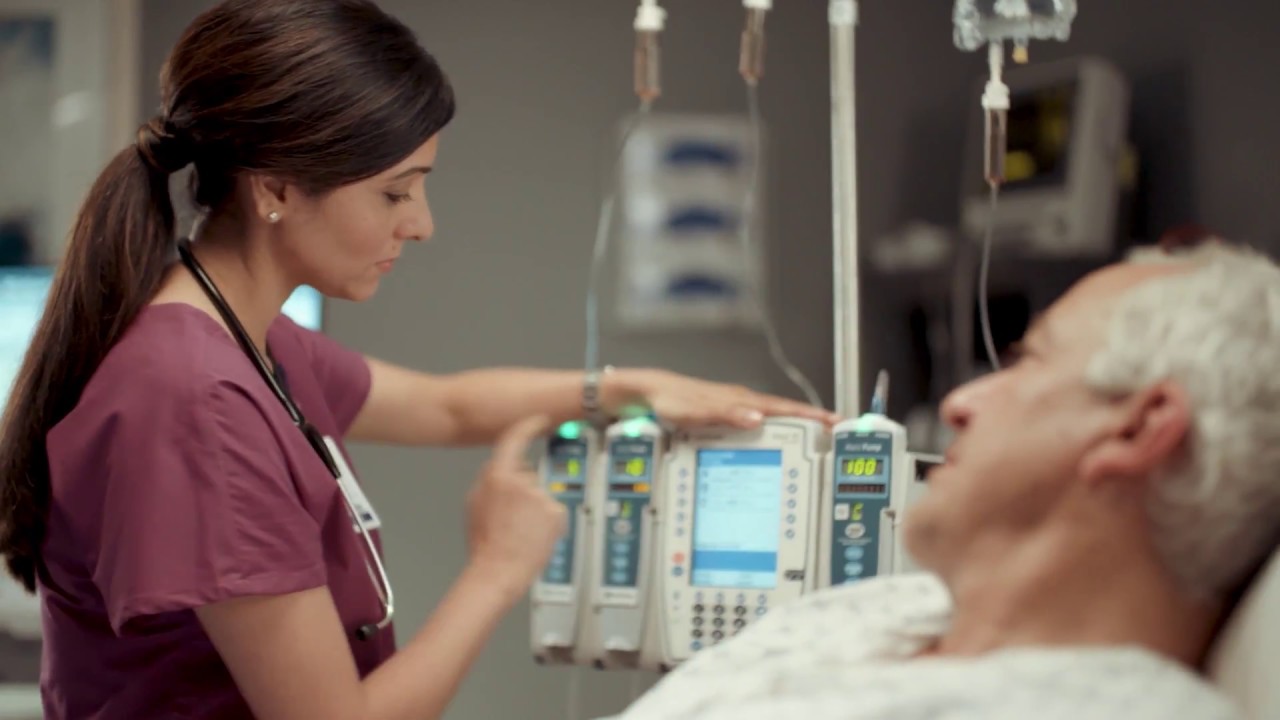The Importance of an IV Pump
 Patients in the acute care setting are most likely going to require intravenous medications. The medical device used to deliver medications and intravenous fluids is call an IV pump. An intravenous pump delivers these medications via an intravenous catheter, central lines, or subcutaneously. The subcutaneous route of administration with an intravenous pump is rarely used but has been effective. Some patients that have a chronic illness and are at home usually have a home healthcare nurse that monitors infusion therapy via an intravenous pump. Home infusion therapy has also proven to be effective. These medication pumps are used in hospitals, ambulances, clinics, home infusion, and all healthcare settings. Intravenous pumps can deliver pain medications, antibiotics, fluids, and other nutrients.
Patients in the acute care setting are most likely going to require intravenous medications. The medical device used to deliver medications and intravenous fluids is call an IV pump. An intravenous pump delivers these medications via an intravenous catheter, central lines, or subcutaneously. The subcutaneous route of administration with an intravenous pump is rarely used but has been effective. Some patients that have a chronic illness and are at home usually have a home healthcare nurse that monitors infusion therapy via an intravenous pump. Home infusion therapy has also proven to be effective. These medication pumps are used in hospitals, ambulances, clinics, home infusion, and all healthcare settings. Intravenous pumps can deliver pain medications, antibiotics, fluids, and other nutrients.
All medical staff and individuals that are going to be using an intravenous pump should read the instructions to ensure proper usage of the device. If a paper copy of the instructions is not available most pumps have instructions posted online. Watching a video of how to operate a particular pump is also a good way to ensure proper use. Nurses and medical staff need to make sure they comprehend how to use the intravenous pump before use to avoid medication errors. Familiarize yourself with all the error codes, alarms, display screens, and messages. If there is a problem with the pump functioning properly do not use it, get another pump.
After staff is comfortable operating the intravenous pump they need to be aware of a few important facts such as; cell phones, wireless hand-held devices, and other digital equipment that send electronic and magnetic signals to have the potential to affect the functioning of the pump. These items need to be kept an acceptable distance away from the pump. Family members and visitors need to be aware of this fact also. Modern pumps are digital therefore before staff touches the pump they need to adhere to proper handwashing protocol. This will also assist in infection control. It is important to keep the intravenous pump clean and dry as liquids will damage the motherboard located within. Always make sure the pump is on a level surface to maintain the proper flow rate. Tubing for the machine needs to be replaced every twnty-four hours. Keep the intravenous machine plugged into a power source so that batteries stay fully charged in the case or emergency transport or power outages. Healthcare staff should always be prepared for emergencies. For troubleshooting errors with the pump, healthcare staff should always know the brand and type of pump they are using.
Once a patient begins any kind of IV therapy if they experience any reactions such as shortness of breath, fever, rashes, hives, pain at IV site, etc be sure to notify healthcare staff immediately. Intravenous medication can have adverse reactions on patients for no reason at all while receiving IV therapy the patient should be assessed frequently. Before starting an IV medication the healthcare staff performs a variety of safety checks to decrease the adverse reactions and medication errors. The pump also has built-in safety features to help prevent these situations. There can still be a few errors in delivery even after all the safety checks, after all, it is a machine.



